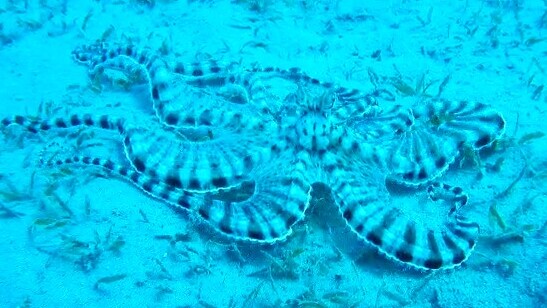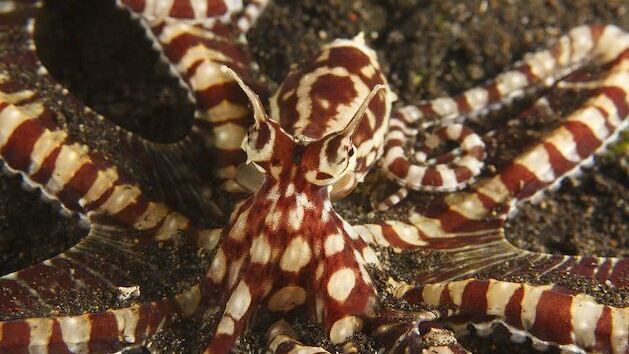Getting your Trinity Audio player ready...
During a routine dive in the Red Sea, the divers of Eilat’s Underwater Observatory spotted and documented an extremely rare and reclusive mimic octopus resting lazily on the sea bed.
The invertebrate, which hails from the Indo-Pacific region, can reach a size of up to 65 cm (25.5 inches) and possesses an unusual ability to mimic other animals as well as blend in with its surrounding environment which makes it both extremely rare in our region and hard to spot.
"[The octopus] can mimic venomous animals like rays, sea snakes, jellyfish and the like, in order to keep various predators at bay,'' says Aviv Levy, the observatory’s scientific director.
According to Levy, the mimic octopus can also change its skin texture, as well as spread and contract its eight tentacles in a way that helps it shift its form to imitate corals, sea sponges and small crabs for both hunting and survival.
To mimic a sea snake, for example, the octopus tucks itself into a hole, sticking two of its tentacles out and rippling them in opposite directions to mimic the snake’s movement.
Like all octopus species, the mimic octopus can also spew thick clouds of ink to escape predators, as well as use its pours to create powerful water jets, which push them forward in a way reminiscent of a jet engine.
The mimic octopus was first discovered in 1998 off the coast of Indonesia. And while most sightings have come from that country, the big cephalopod has been spotted as far afield as the Great Barrier Reef in Australia, as well as near Israel's southernmost city.



